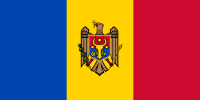Individual Partnership Action Plan

Individual Partnership Action Plan |
Individual Partnership Action Plans (IPAP) are plans developed between NATO and different countries which outline the objectives and the communication framework for dialogue and cooperation between both parties. NATO launched the IPAPs initiative at the 2002 Prague Summit.
IPAPs are in implementation with the following countries:[1]
-
 Georgia (29 October 2004)
Georgia (29 October 2004) -
 Azerbaijan (27 May 2005)
Azerbaijan (27 May 2005) -
 Armenia (16 December 2005)
Armenia (16 December 2005) -
 Kazakhstan (31 January 2006)
Kazakhstan (31 January 2006) -
 Moldova (19 May 2006)
Moldova (19 May 2006) -
 Bosnia and Herzegovina (10 January 2008)
Bosnia and Herzegovina (10 January 2008) -
 Montenegro (1 June 2008)
Montenegro (1 June 2008) -
 Serbia (15 January 2015)[2]
Serbia (15 January 2015)[2]
Armenia,[3][4] Azerbaijan,[5] Kazakhstan,[6] Moldova[7] and Serbia[8] [9] have stated they have no current intention to join NATO. Georgia is currently undergoing Intensified Dialogue for NATO membership[10] while Montenegro[11] and Bosnia and Herzegovina[12] have Membership Action Plans and are actively working towards joining NATO.
Ukraine's relationship with NATO is governed by the NATO-Ukraine Action Plan, adopted on 22 November 2002.[13][14] In April 2005, Ukraine entered into Intensified Dialogue with NATO,[15] and during the 2008 Bucharest summit NATO declared that Ukraine could become a member of NATO when it wants to join and meets the criteria for accession.[16] However, by 2010 Ukraine had announced that it no longer had NATO membership as a goal under the foreign policy of new President Viktor Yanukovych.[17][18] Following months of Euromaidan street protests that began because of his refusal to sign an Association Agreement with the European Union in favor of deals from Russia, President Yanukovych was overthrown. In response to Russian involvement in eastern Ukraine and the alleged deployment of Russian troops on Ukrainian soil, the Ukrainian Prime Minister Yatsenyuk announced his intentions to resume the bid for NATO integration in August 2014,[19] and in December 2014, Ukraine's parliament voted to drop non-aligned status that was passed in 2010.[20]
References
- ↑ "Individual Partnership Action Plans". NATO. Retrieved 2013-11-13.
- ↑ "NATO's relations with Serbia". NATO. 2015-01-16. Retrieved 2015-01-16.
- ↑ "NATO's relations with Armenia". NATO. Retrieved 2013-11-11.
- ↑ "Sargsyan: Armenia joining NATO is "not on the agenda"". Euronews interview. 2008-10-10. Retrieved 2013-11-11.
- ↑ What hampers Azerbaijan to join NATO?, contact.az (June 15, 2011)
- ↑ "Kazakhstan, NATO, and Russia". 2000-07-10. Retrieved 2013-11-11.
- ↑ "Moldova's acting president denies that Moldova plans to leave CIS, enter NATO". Kyiv Post. 2009-09-16. Retrieved 2013-11-11.
- ↑ "NATO's relations with Serbia". NATO. Retrieved 2013-11-11.
- ↑ "Serbia joins with NATO to target surplus munitions". 2013-10-07. Retrieved 2013-11-11.
- ↑ Press Release (2011) 145, NATO (December 7, 2011)
- ↑ Usaglašavanje III paketa Partnerskih ciljeva 2012, nato-montenegro.me (Januari 26, 2012)
- ↑ Bosnia-Herzegovina applies for NATO membership, RIA Novosti website group (Oktober 2, 2009)
- ↑ "NATO-Ukraine Action Plan". NATO. 2002-11-22. Retrieved 2013-11-11.
- ↑ "NATO's relations with Ukraine". NATO. Retrieved 2013-11-13.
- ↑ "NATO launches 'Intensified Dialogue' with Ukraine". NATO. 20 April 2005.
- ↑ "NATO confirms readiness for Ukraine's joining organization". 13 April 2010. Retrieved 26 December 2012.
- ↑ "Yanukovich vows to keep Ukraine out of NATO". 7 January 2010. Retrieved 26 December 2012.
- ↑ "Ukraine drops NATO membership bid". EUobserver. 2010-06-06. Retrieved 2013-11-11.
- ↑ http://www.bbc.co.uk/news/world-europe-28978699
- ↑ "Ukraine votes to drop non-aligned status". BBC News. 23 December 2014. Retrieved 23 December 2014.
